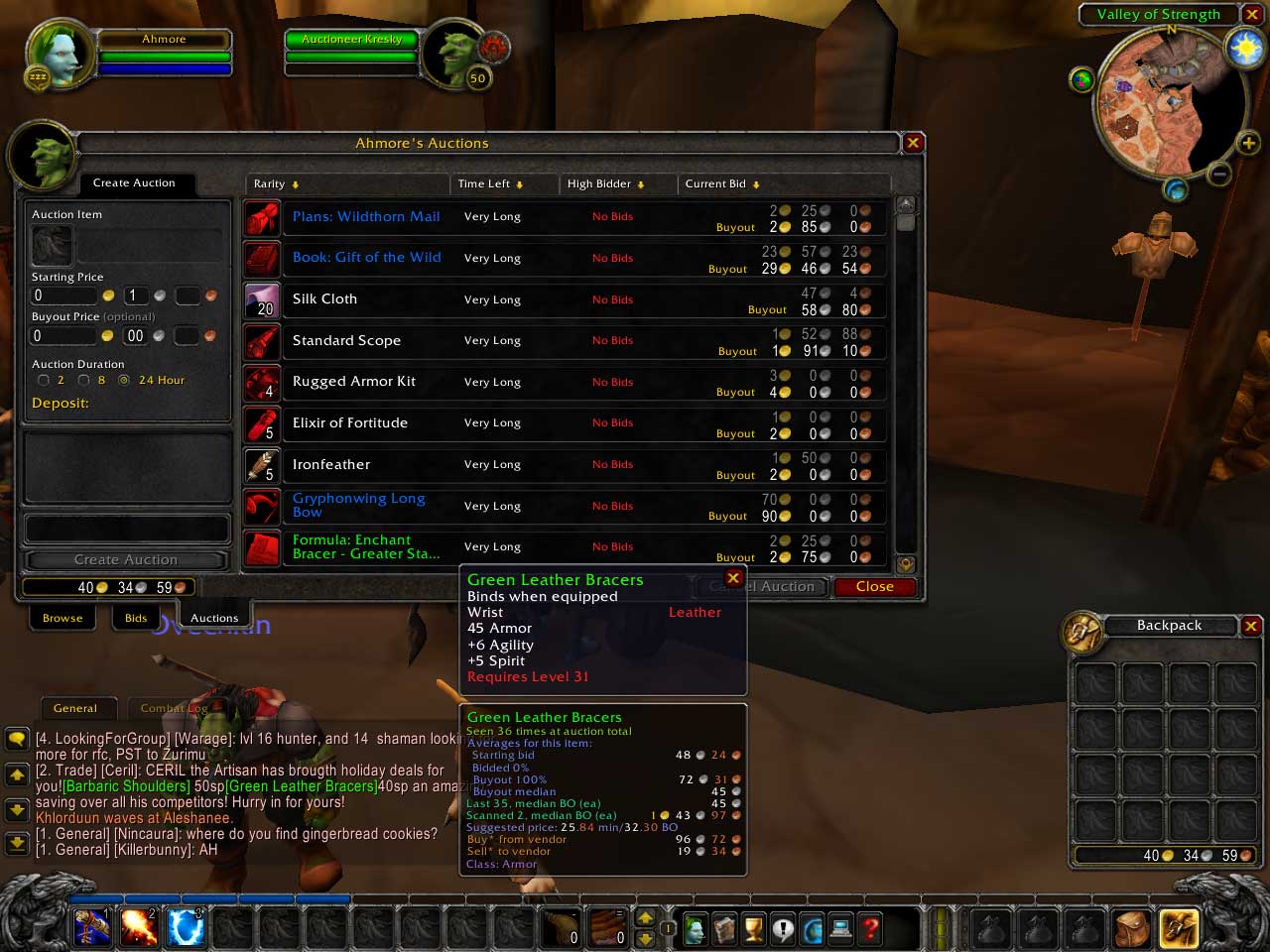
With its sunny beaches, snow-covered mountains, lush forests, and unique deserts, there's something for everyone in Azeroth. It wouldn't be a bad place to visit either . . . that is, if it weren't inhabited by orcs, elves, demons, undead, and the like. Yes, Azeroth exists in a game--in World of Warcraft to be exact. However, just because it's a game doesn't mean the principles of the real world do not apply to the virtual world. In fact, there is a thriving economy that exists in WoW (granted, the economy is based on a bunch of 1's and 0's but hey, so is ours with all the financial databases today). Now, I'm sure there are many interesting things that can be said (and probably have been) about the auction houses in WoW, but what I'm going to talk about now is another aspect of the economy in WoW--the profession system to be exact.
First off, in World of Warcraft, characters can choose to learn professions or tradeskills (such as mining, blacksmithing, jewlcrafting, tailoring, and even engineering). However, each character is limited to learning only two professions out of the ten available. This means that by learning professions, the characters are basically specializing in something. Adding another layer of detail to the profession system is the fact that not everyone can make the same things (meaning not every blacksmith can make that really big sword or that really cool helmet). The reason being is that the patterns/schematics/recipes for things that can be made have to be found (and naturally, some of them are harder to find than others).
So what does all this mean and how is the related to economics? With thousands of players per server each specializing in something, it doesn't take much for trading networks to spring up between players in the game. The traders are the players with professions. The sellers are the players that are selling raw materials to the traders (such as selling iron ore to a blacksmith). The buyers are the players that wish to purchase the good that the trader can make (like a really big sword). Generally, the network would involve a lot of sellers and buyers, and very few traders. The abundance of sellers almost guarantees that the trader can purchase all the raw materials for a low price. And, after crafting the good out of the raw materials, the number of buyers eagerly waiting to get their hands on that rare good (that really big and shiny sword) means the trader can choose to sell to the buyer that has the highest value (and thus would pay the most for it).
The means in which the trader goes about selling the item is also something interesting to note. The trader can run an impromptu auction via the chat channels, having buyers message him with their values and selling to the buyer with the highest value (a first price sealed bid auction if you will). Or, the trader can put the item up for auction at the auction house. The auction house works basically like a first price sealed bid auction but with two twists: 1) there is a time limit and 2) the player who posted the auction can have the option of setting a buyout price (like the 'buy it now' feature of eBay). The more interesting of the two differences is the time limit. Because the auction will end in a set amount of time and because it is a first price sealed bid auction, the time limit actually encourages bidding at the last second (or sniping).
So, despite the fact that World of Warcraft and other games exist in the virtual world, the fact that the games are played by humans means that economies and economic principles from the real world will inevitably spring up and be apparent within the virtual world.
No comments:
Post a Comment